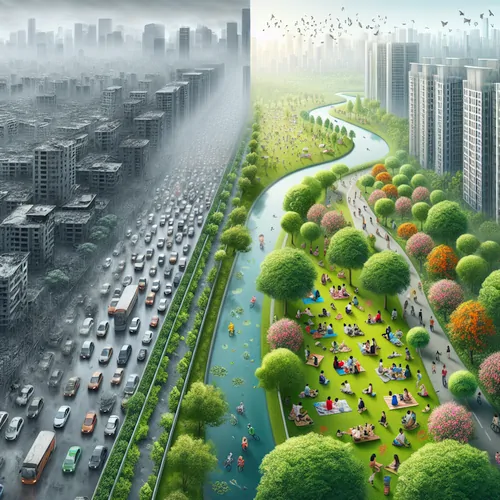Urbanization’s Impact on Health
Urban life has revolutionized societies across the globe, providing numerous job opportunities and conveniences. However, this rapid development also presents unique challenges. Studies show that urban dwellers experience higher rates of stress, anxiety, and depression compared to those living in rural settings. One factor contributing to this disparity is the loss of access to natural environments, which research consistently links to better mental and physical health outcomes.
Importance of Green Spaces
Green spaces play a critical role in urban well-being, providing much-needed respite from the bustle and noise of city life. These areas promote physical activities, improve air quality, and boost biodiversity, all while creating aesthetically pleasing spaces that enhance our quality of living. By incorporating more green spaces into urban landscapes, we can address some of the health disparities exacerbated by modern urbanization.
Incorporating Green Spaces in Urban Revitalization Projects
City planners and municipal leaders can help mitigate these effects by making concerted efforts to prioritize green infrastructure in revitalization projects. They must consider the potential impact of such developments on existing natural habitats, while also taking into account residents’ needs for recreation, community spaces, and sustainable practices. Collaboration between various stakeholders - from landscape architects to environmental advocacy groups - is essential for creating holistic green space plans that benefit both ecosystems and human populations alike.
Green Infrastructure Design Best Practices
- Ensure accessibility: All urban residents should have easy, equitable access to green spaces. This can be achieved through the creation of walking trails, public parks, and communal gardens within residential areas or close proximity to transport hubs.
- Preserve existing biodiversity: Prioritize the conservation of native plant species when designing new green spaces, ensuring that they remain habitats for local wildlife and promote overall ecosystem health.
- Utilize sustainable water management practices: Employ innovative strategies like rain gardens, permeable pavers, or bioswales to manage stormwater runoff while also filtering pollutants from urban areas.
- Implement multi-functional designs: Maximize the benefits of green spaces by integrating them into broader city planning initiatives. For example, parks can serve as gathering spots for community events and provide educational opportunities about local ecosystems and sustainable practices.
- Engage residents in stewardship programs: Foster a sense of ownership and connection to green spaces by involving local residents in their maintenance and conservation efforts. This will help create vibrant, resilient communities that thrive alongside healthy ecosystems.
Revitalizing urban green spaces is not only an aesthetically pleasing endeavor but also holds tremendous potential for improving our collective well-being. By investing time and resources into designing thoughtful, accessible green infrastructure solutions, we can help create more equitable cities where both people and nature thrive
